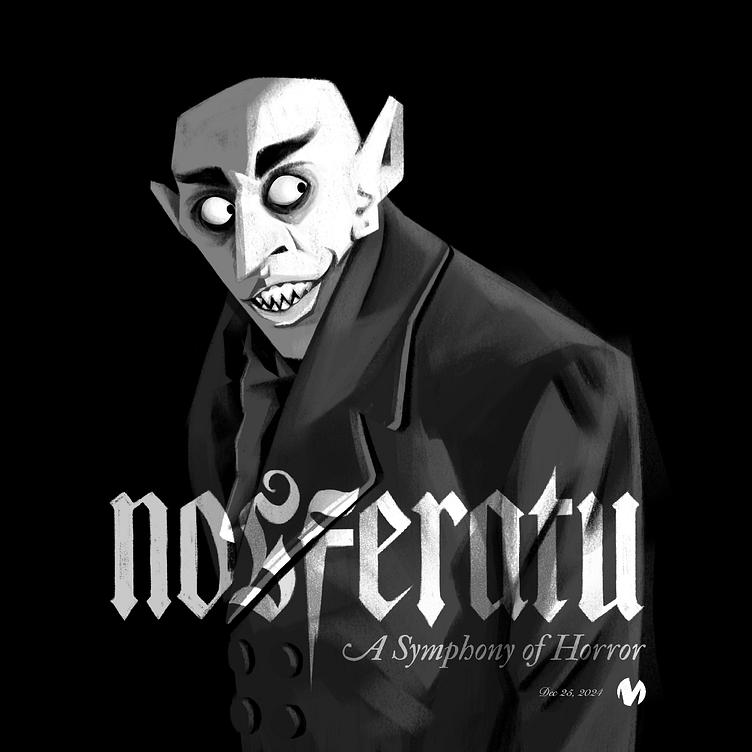Nosferatu: A Symphony of Horror
This illustration pays homage to the film Nosferatu (1922), one of the earliest adaptations of Bram Stoker’s novel Dracula (1897), and celebrates the release of the Nosferatu remake in 2024. I have always considered the depiction of Count Orlok in the original film to be one of the most haunting and iconic interpretations of the Dracula character. The film’s horrifying visuals and enduring legacy continue to inspire the horror genre today.
Process
The scene I chose to illustrate is one of the most haunting moments in Nosferatu (1922), when Count Orlok appears in an old castle. This shot introduces Count Orlok to the viewer, creating an overwhelming sense of his presence. As he turns, the lighting from the right side of the screen highlights his bloodthirsty nature, emphasizing his fangs and unnaturally long arms. I found this moment so iconic that I decided to adapt it into an illustration.
For the title, I used a Fraktur-style font as a tribute to the original Nosferatu. Fraktur was a popular font in 16th-century Germany, characterized by bold letterforms with distinctive strokes. Calligraphers use a pointed pen to create the sharp, dramatic impressions at the ends of each letter. This sharpness perfectly represents Count Orlok’s fangs and menacing presence, which is why I chose this font.
Credits:
The illustration is inspired by the film Nosferatu (1922) and Bram Stoker’s novel Dracula (1897).





